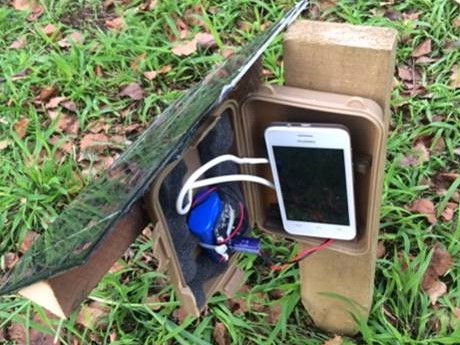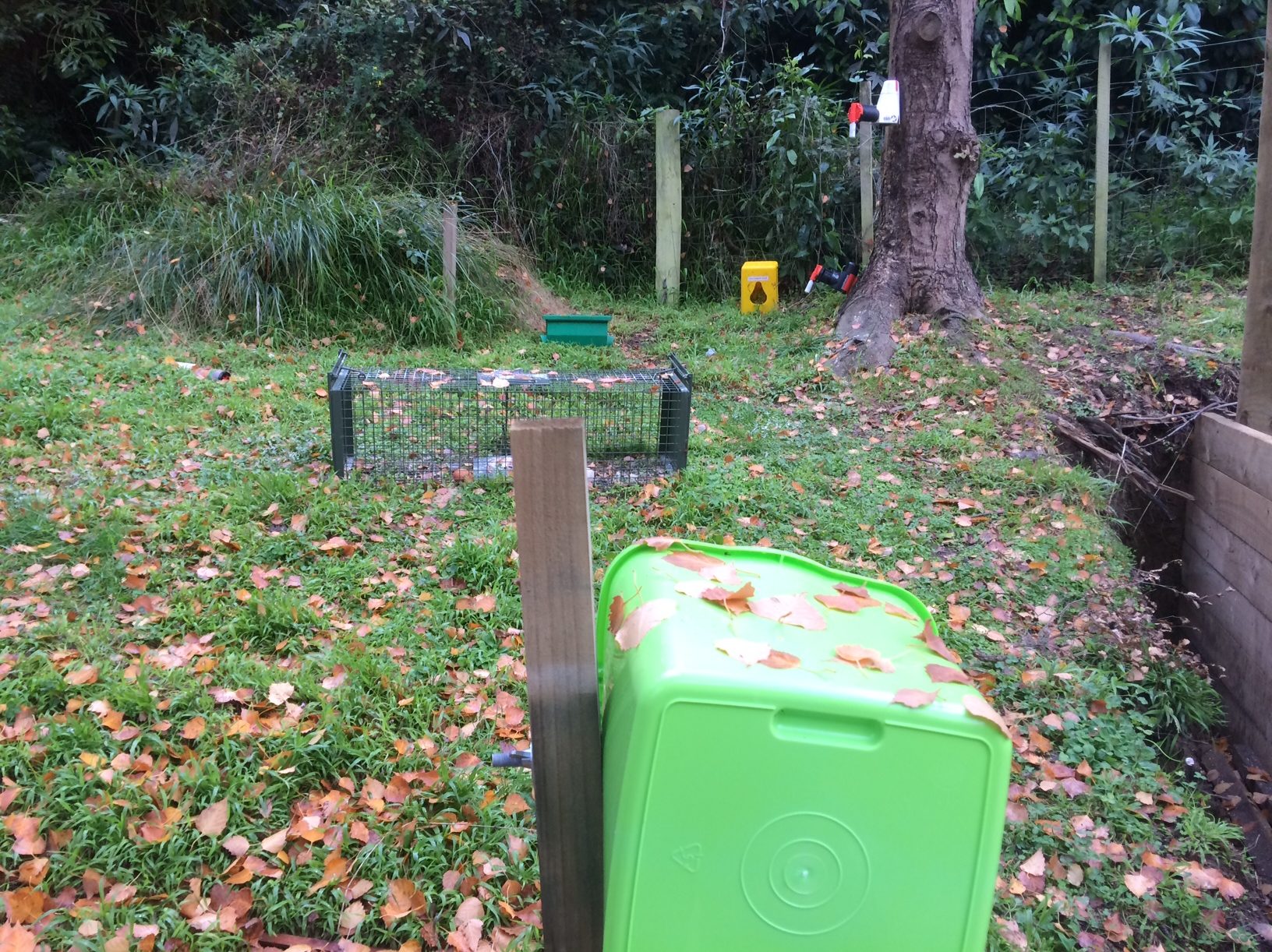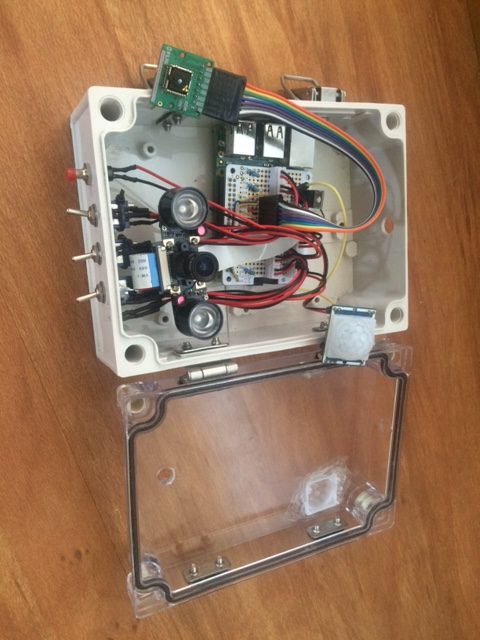Early New Zealand was noisy. Cook and his crew experienced a ‘cacophony of sound’ on their first voyage. It’s that loud, raucous, exuberance which Banks Peninsula engineer and inventor Grant Ryan is aiming to restore through an open source technology project he has initiated.
“There are two key defining features about the Cacophony Project that make it complementary to other predator eradication initiatives,” Grant explains. “The first key thing is that it’s open source. That’s how a lot of innovative technology gets developed – Wikipedia for example. Tools are developed which can then be used and improved. We can start the thinking, but we can’t solve everything by ourselves. Open source is a way the whole tech community can pitch in.”

Grant contacted David Lane, President of the NZ Open Source Society, early in the project’s development to ensure that Cacophony is a ‘best practice’ open source project.
The second key feature of Cacophony is a phenomenon well-known in the tech community but perhaps not so well understood by the wider public. It’s known as Moore’s Law.
“Using cameras, artificial intelligence, digital sound technology – it seems like it will be expensive. But Moore’s Law says that digital technology becomes ½ the price or twice as good every 18 months. So if you can build the ultimate device it will just keep getting better and cheaper.”
Grant and the Cacophony open source team are aiming high. They’re developing an artificial intelligence device that will identify a predator, lure the target and kill it – and work for every predator, every time – a 100% kill rate!
“We’ve done an analysis on Predator Free 2050 and we think it’s crazy!” says Grant. “We should be able to do this by 2040 or earlier!”
Grant’s basing that assertion on Moore’s Law.
“If something costs $20,000 now, even if the technology improves at half the rate that it has historically, we’ll still get there much earlier than 2050. Take a little computer with four processors – 12 years ago that was ‘military strength’ technology. Now you can get one for $40.”
It’s easy to assume that technology solutions are too expensive – and they can be – but only initially, when you’ve got Moore’s Law on your side.
“Technology solutions will make traps thousands of times better than they are now, so you’ll not have to have them in an area all the time. The technology is there for a couple of weeks, does the job (100%), then moves elsewhere.”

The team at Cacophony have put cameras in front of existing traps to see what happens.
“They work as little as 1% of the time,” says Grant. “Of 100 possums, maybe one is caught in the trap. Most walk by. Some poke their head in. Occasionally a trap goes off. Occasionally the possum dies.”
The current use of food lures is also an issue – its species-specific (peanut butter for rats, rabbit meat for stoats). The food goes off or it gets eaten and the trap then sits idle. It’s essentially the same pest-catching methodology we’ve been using for centuries. As an inventor and engineer, Grant says there’s got to be a better, state of the art way of getting rid of predators. He thinks sound lures will be part of that solution.
“All predators have ‘social noises’,” says Grant. “They ‘talk’ to each other and its species-specific.”
The idea is to come up with a trap system that can play sounds to lure predators in then use artificial intelligence to digitally identify what the predator is (and ensure it is a non-target species), then kill it, probably with a squirt of poison which it licks off its fur.
“A sound lure works over 10 times the distance that a scent lure does (only 3-5 metres). That means a sound lure is effective over 10×10=100 times the area. What’s more the same trap can be used for all predators and there’s no need to rebuild it as the technology improves. As soon as you get better processes you can update it.”
Another advantage of using social sound lures is that they also target the very last, hardest to get predators. A food lure doesn’t work for this hard core. Their rivals are dead – they have plenty of food. With numbers so low, however, it’s even harder than usual to find a mate. Cue the social lure… Even if the sound lure only targets one sex of a particular species, it still solves the problem. By killing 100% of females (or males), the remaining sex are unable to breed.
So how do you give a trap system ‘artificial intelligence’?
It’s all about pattern recognition.
“We’re recording videos of all predators then we run the footage through an algorithm (a sequence of automatic computer actions/calculations). Then we show the system a new video and it should be able to identify it,” Grant explains. “Then you recalibrate.”
Each time you go through the process, the artificial intelligence algorithm is being systematically improved and refined.

The engineer’s approach to invention is often different from that taken by scientists, Grant reckons.
“Scientists start by trying to find out ‘why’ something is, then work out how to make use of it,” he says. “Engineers work out how to do something, then they (or the scientists) work out why it works later. Engineers invented the bicycle, but scientists are still discussing the details of why bikes work,” he says.
Using the ‘engineer’s approach’, Cacophony Project’s goal is to come up with a technological solution that is 100% effective – then Moores law will help make it cheaper.
“I’ve got a lot of respect for predators, having watched them,” says Grant. “They’re not stupid. We have to evolve and adapt faster than them. And there’s a massive Information Technology toolkit are there that hasn’t been systematically applied to this problem yet,” he adds.
Open source is about teamwork and a goal shared by a team who may never even meet each other.
“It’s a fun project that’s building momentum as more people start to contribute,” Grant says. “One of the cool things about hard core tech people who code is that they like to contribute to shared projects. We have a core little team and they then coordinate others who are chipping in for free.”
So what’s the appeal of this particular project?
“Becoming predator free is one New Zealand’s problem that really is internationally significant – we have one of the worst rates of species loss and a large proportion are still in decline,” says Grant. “As an inventor there’s lots I could be working on – but this is by far my main priority. Open source is a way that we can almost certainly make significant chunks of New Zealand predator free way before 2040 even! We don’t require breakthrough knowledge. We can plug into things that already out there and systematically test lots of things.”
It sounds like that noisy dawn chorus – Cook’s cacophony of sound – may be a little bit closer than we think. So exactly how noisy was it back in when the Endeavour was exploring our coastline? This is what Cook’s botanist, Joseph Banks wrote in his journal on 17 January 1770, when the ship was anchored in Queen Charlotte Sound:
This morn I was awakd by the singing of the birds ashore from whence we are distant not a quarter of a mile, the numbers of them were certainly very great who seemd to strain their throats with emulation perhaps; their voices were certainly the most melodious wild musick I have ever heard, almost imitating small bells but with the most tuneable silver sound imaginable to which maybe the distance was no small addition. On enquiring of our people I was told that they have had observd them ever since we have been here, and that they begin to sing at about 1 or 2 in the morn and continue till sunrise, after which they are silent all day like our nightingales.
Who knows, once predators are dealt with and the birdsong returns, future generations may have no further need for setting their alarm in the morning. Perhaps we’ll become a nation of very early risers…

